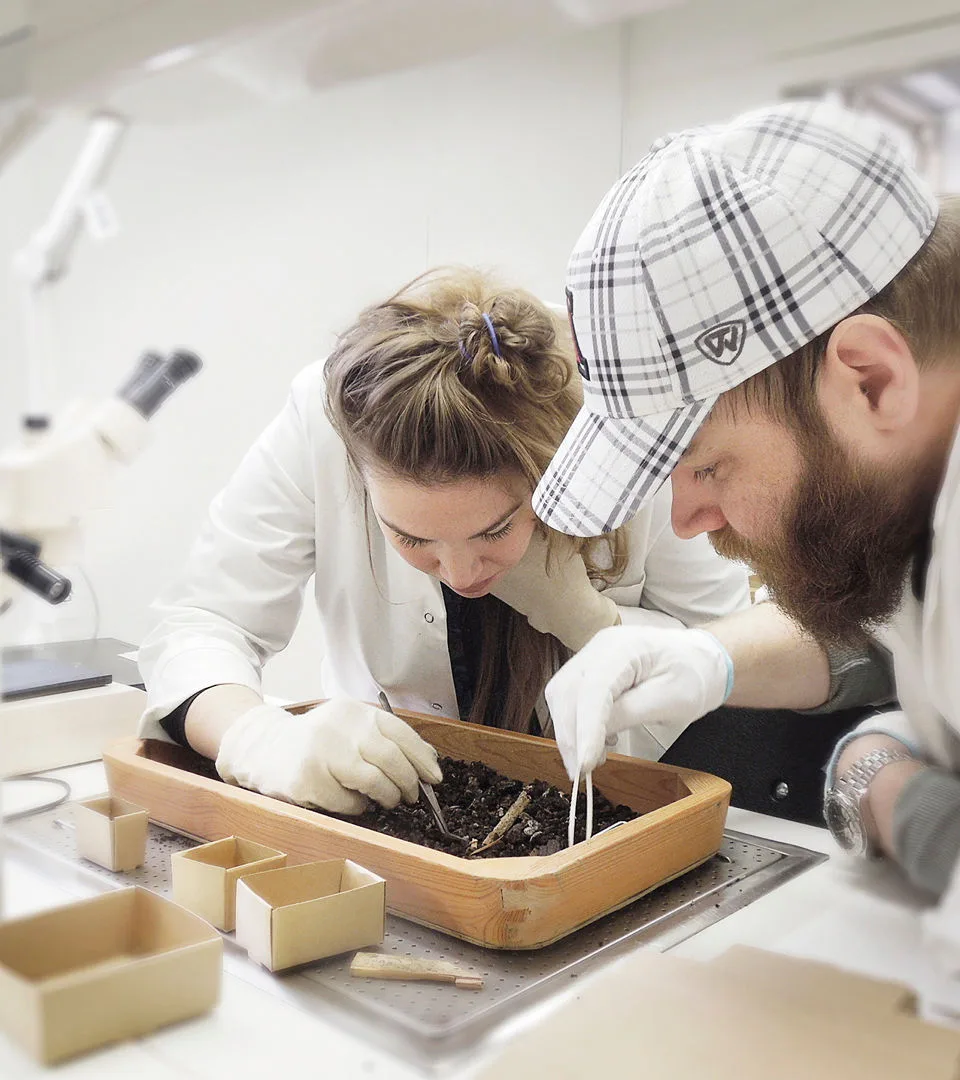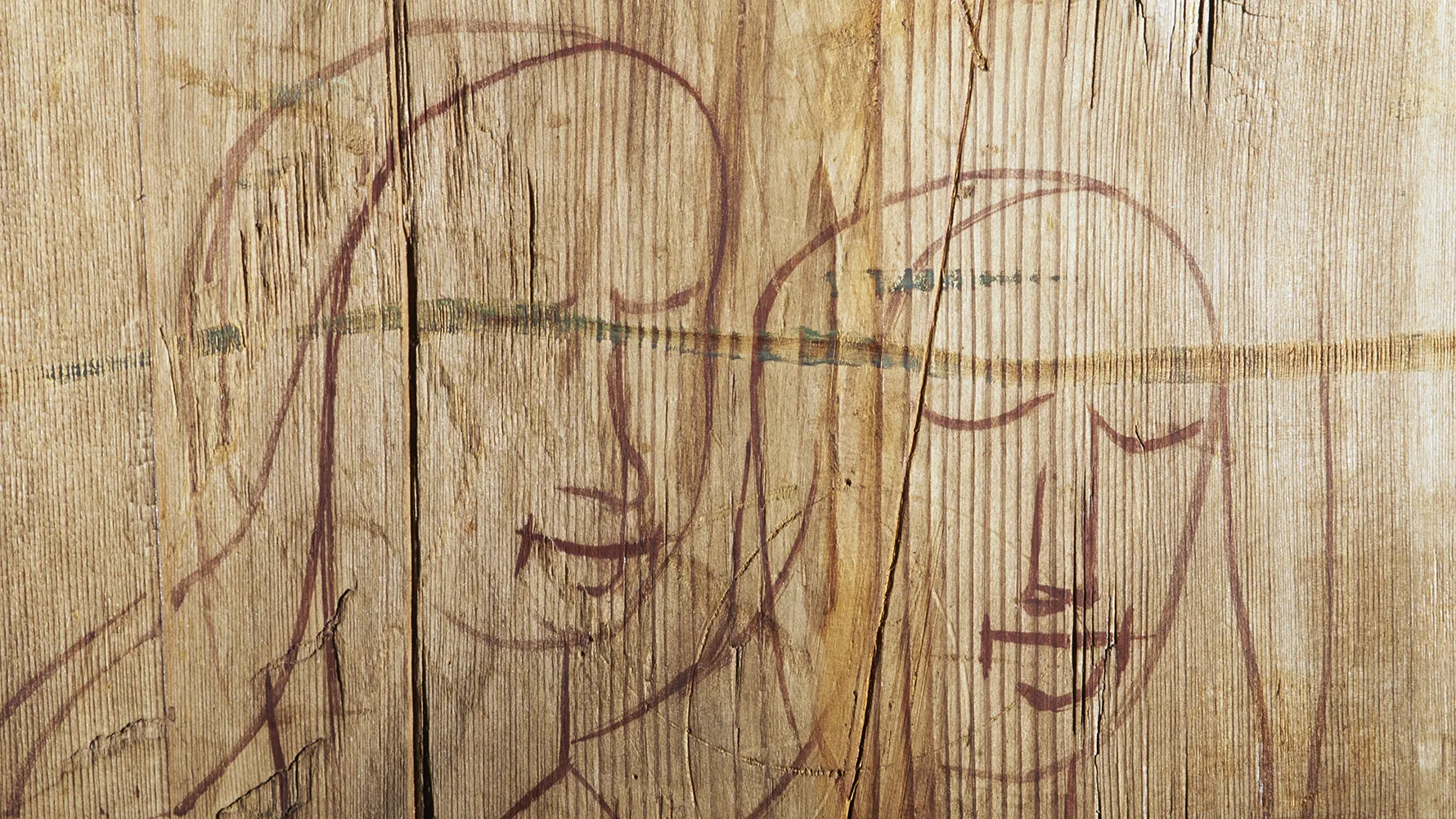A medieval skeleton's brutal fate
Viking Age
AD 800 – AD 1100
Middle Ages
AD 1050 – AD 1520
Modern Age
AD 1520 – AD 2025
In 1950, workers at a gravel pit near Ajmunds Bridge in Mästerby parish on Gotland discovered a skeleton. An archaeologist was called to the site, but she found no grave goods to help date the skeleton, so it was initially assumed to be from the Iron Age. Without further investigation, the skeleton was sent to the Swedish History Museum. There, an osteologist, a specialist who studies human and animal bones, made fascinating discoveries about how the person had lived.
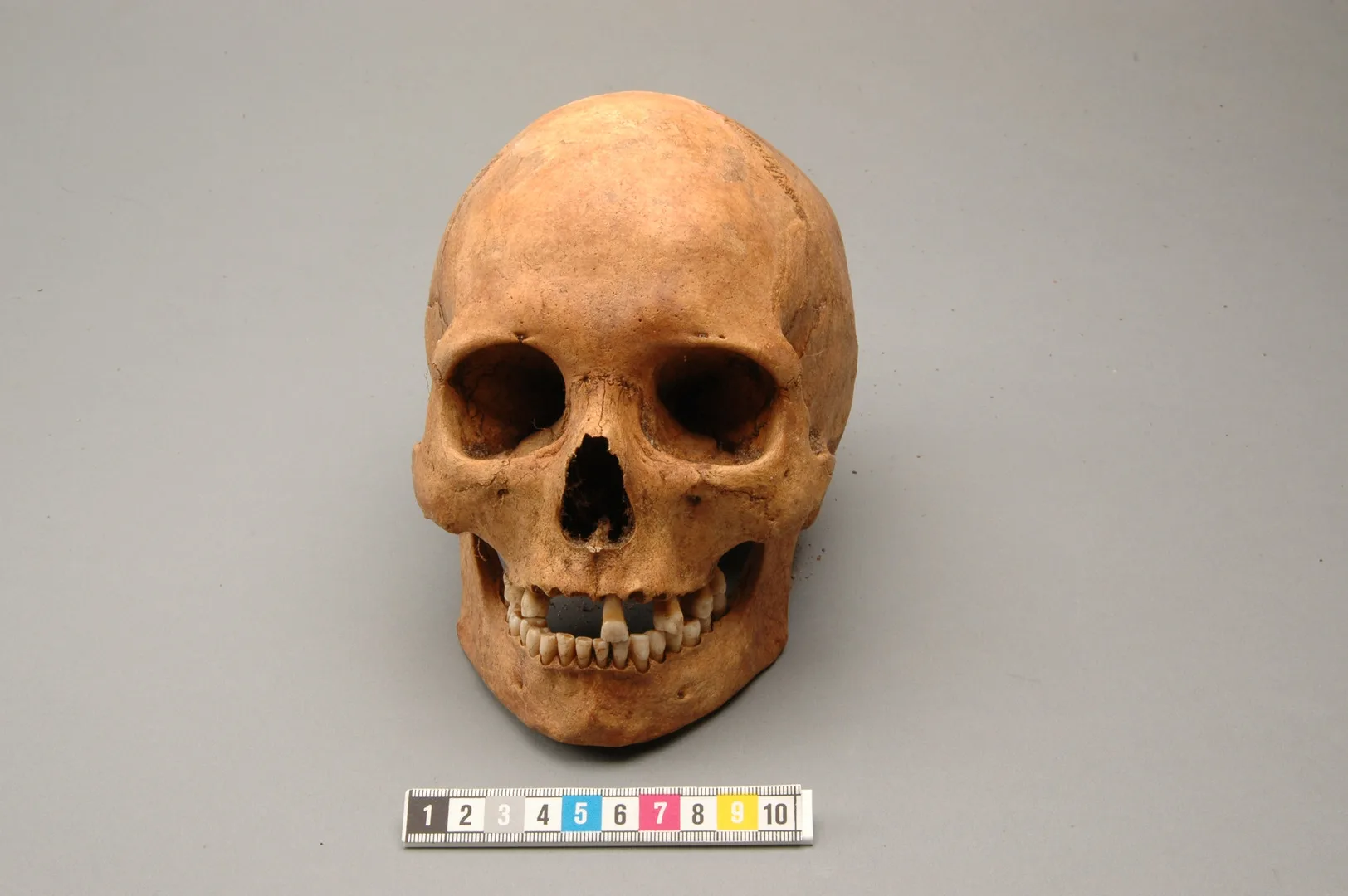
Skull of a young woman
Found near Ajmunds Bridge, Mästerby parish, Gotland. Dental traces indicate that she suffered from malnutrition at ages 2–3.
Disabled from childhood
The unusually well-preserved bones belong to a young woman who was 18–20 years old at the time of her death. She suffered from a disease affecting both elbow joints and the left femur. The joint surfaces of her elbows were deformed, limiting her mobility. Her left leg was significantly shorter, and the knee joint was angled outward, causing her to limp.
Osteologists are not certain what disease caused this, but her health temporarily worsened when she was 2–3 years old. Perhaps that was when she first became ill. Traces on her teeth show she suffered from malnutrition at that age. The woman appears to have tried to compensate for her disability, which eventually led to overuse and pain due to shin inflammation.
Her limp is evident from the shortened left femur and the misaligned knee.
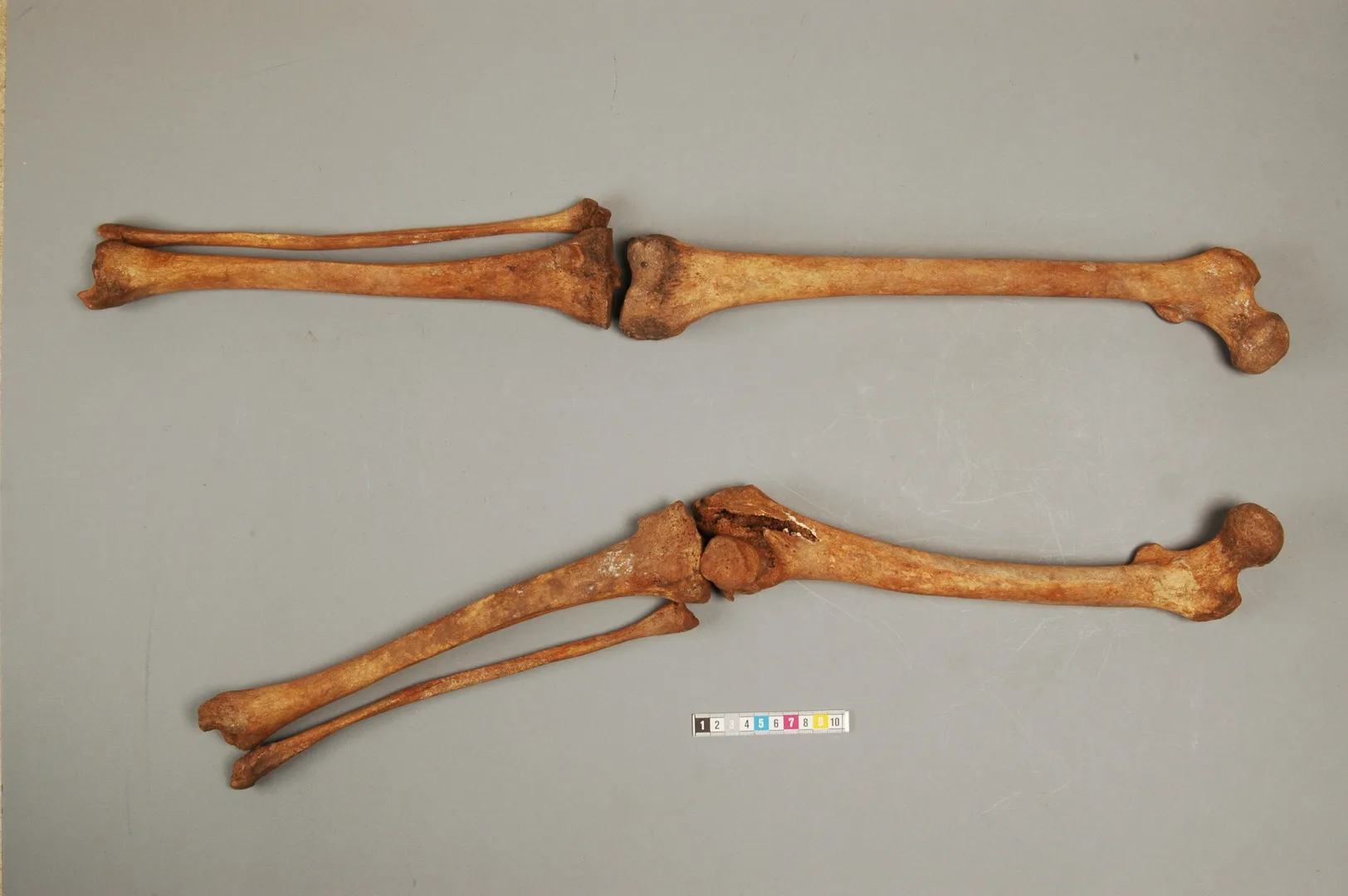
Bones of a young woman
Found in Ajmunds bro, Mästerby parish, Gotland.
Beheading ended her life
The manner of her death was also unusual. A deep cut across the fourth cervical vertebra tells a clear story: she was beheaded. Why did she meet such a terrible fate? Was she murdered or executed? Did her disability play a role? These questions may never be answered, but studying the history of the place where she was buried brings us closer to understanding.
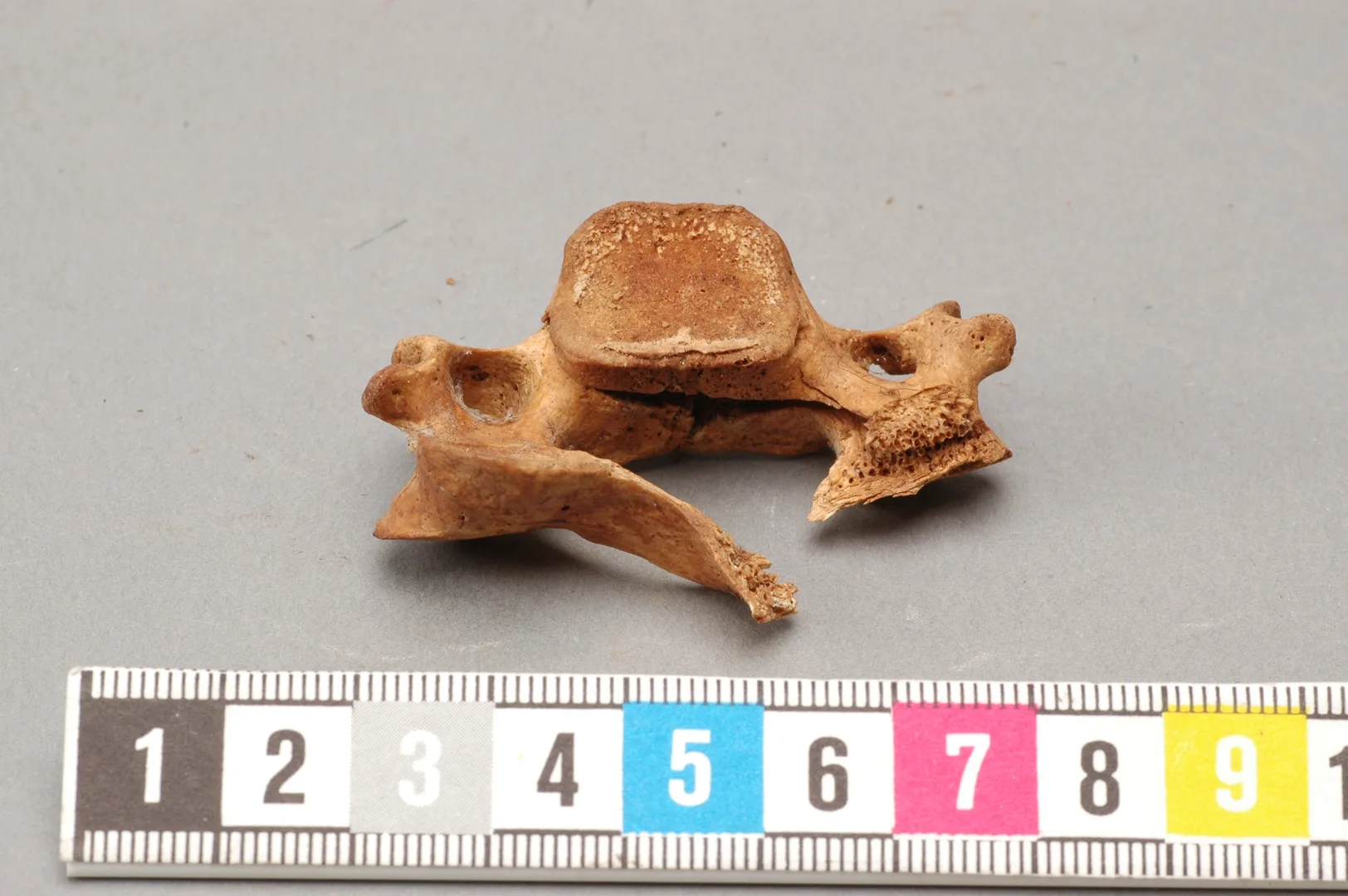
Cervical vertebra of a young woman
Found in Ajmunds bro, Mästerby parish, Gotland.
Valdemar Atterdag’s raids
Ajmunds Bridge is associated with the Danish king Valdemar Atterdag and his raids on the island. Here, the Danish army with around 2,000 men, clashed with the under-equipped Gotlandic peasant army of perhaps 500 men on a hot summer day in late July 1361. The only escape was to flee. Our young woman may have been one of those who could not get away due to her mobility issues. However, there is a more likely explanation.
Law and order
During the Middle Ages, Gotland had three courts with different powers: the local court (ting), the “sättningsting,” and the landsting. The landsting, also called Gutnaltinget, was the island’s highest legislative, decision-making, and judicial authority. One of the two landsting locations was near Ajmunds Bridge.
Here, people suspected of serious crimes, those punishable by death, were tried. Women were not hanged for moral reasons (to prevent onlookers from seeing under their skirts), so other methods were used. Beheading was one such method. Being “placed quick in the earth,” or buried alive, was another.
A life of hardship
It is likely that the anonymous skeleton, initially thought to be from the Iron Age, is actually much later. Beheading was a typical medieval punishment, and those sentenced to death were considered guilty of crimes so severe that they were denied burial in consecrated ground, condemned to eternal suffering after death. Considering the function of the burial site and her beheading, it seems more plausible to date the young woman to the Middle Ages.
Many questions remain. What crime did she commit? How did society view her disability? Could she even have been accused of witchcraft? Future could provide more accurate answers about when she lived and place her in historical context. However, there is no doubt that she experienced unusually many hardships, leaving visible traces on her skeleton.
